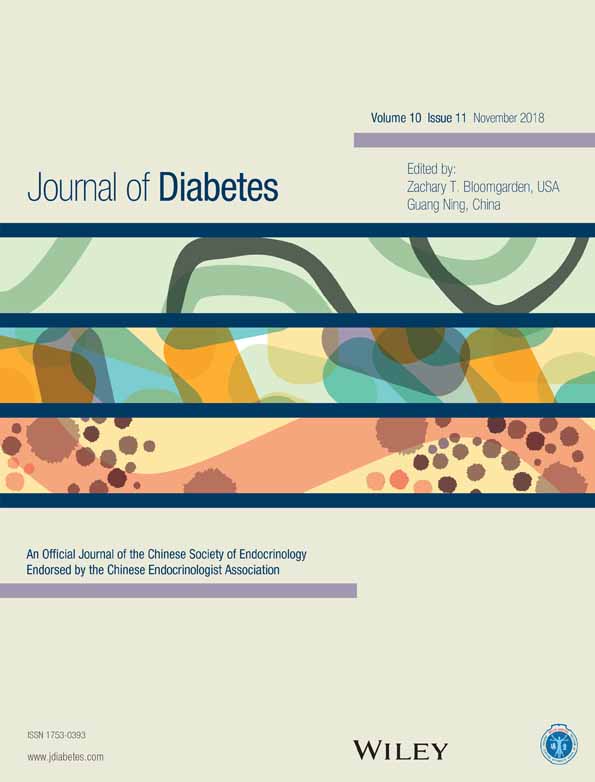Low molecular-weight fucoidan protects against hindlimb ischemic injury in type 2 diabetic mice through enhancing endothelial nitric oxide synthase phosphorylation
低分子量褐藻多糖硫酸酯通过促进内皮型一氧化氮合成酶磷酸化减轻2型糖尿病小鼠下肢缺血性损伤
Abstract
enBackground
Diabetes mellitus (DM) complications are associated with ischemic injury. Angiogenesis is a therapeutic strategy for diabetic foot. The aim of this study was to investigate the possible angiogenic effect of low molecular weight fucoidan (LMWF) in diabetic peripheral arterial disease (PAD).
Methods
Diabetic db/db mice and age-matched C57BL/6 mice underwent femoral artery ligation followed by LMWF (30, 60, 80 mg/kg per day, p.o.) or cilostazol (30 mg/kg/day, p.o.) treatment for 6 weeks. Endothelium-dependent vasodilation and blood flow of the hindlimb were measured. Histological and western blot analyses of CD34, vascular endothelial growth factor (VEGF), eNOS, and inflammatory factors in the gastrocnemius were performed. The effects of LMWF were confirmed in human umbilical vein endothelial cells (HUVEC).
Results
Diabetic mice with ligation exhibited hindlimb ulceration, hydrosarca, and necrosis, increased expression of inflammatory factors, and decreased levels of VEGF and eNOS phosphorylation. Treatment with LMWF markedly ameliorated foot lesions, suppressed expression of inflammatory factors, and improved plantar perfusion by promoting endothelium-dependent vasodilation and revascularization in diabetic PAD mice. In high-glucose treated HUVEC, LMWF (40 μg/mL) reversed blunted endothelial cell proliferation, migration, and tube formation, and promoted eNOS phosphorylation and VEGF expression, whereas HUVEC pretreatment with 100 μmol/L NG-nitro-l-arginine methyl ester, an eNOS antagonist, markedly inhibited the effects of LMWF.
Conclusion
This study demonstrates that LMWF alleviates hindlimb ischemic damage, at least in part by promoting eNOS phosphorylation, nitric oxide production, and VEGF expression, resulting in enhanced angiogenesis in the ischemic region.
Abstract
zh摘要
背景
糖尿病并发症与缺血性损伤密切相关。促血管新生是糖尿病足的主要治疗策略。本研究旨在探讨低分子量褐藻多糖硫酸酯(low molecular weight fucoidan,LMWF)在糖尿病外周动脉疾病(peripheral arterial disease,PAD)中的血管新生作用。
方法
采用2型糖尿病db/db小鼠和周龄匹配的C57BL/6对照小鼠进行股动脉结扎手术, 然后分别给予LMWF(30、60和80 mg/kg/天/组)或西洛他唑(30 mg/kg/天/组)灌胃, 持续6周。检测主动脉内皮依赖性舒张和下肢血流, 利用组织学分析与western blot测定腓肠肌CD34、血管内皮生长因子(vascular endothelial growth factor,VEGF)和eNOS以及炎症因子等的表达。最后, 采用人脐静脉内皮细胞(human umbilical vein endothelial cells,HUVEC)验证LMWF促血管新生的作用。
结果
糖尿病小鼠结扎后下肢出现溃疡、水肿、坏死, 骨骼肌炎症因子表达增加, 同时VEGF水平和eNOS磷酸化降低。LMWF治疗后明显改善PAD小鼠的糖尿病足病变, 抑制炎症因子表达, 并且通过促进内皮依赖性血管舒张和血管新生改善PAD小鼠缺血足底的血流灌注。此外,LMWF(40 μg/mL)还能逆转高糖对HUVEC的增殖、迁移和管腔形成的抑制, 促进eNOS磷酸化和VEGF表达, 而eNOS拮抗剂NG-硝基-L-精氨酸甲酯(L-NAME,100 μmol/L)预处理HUVEC能明显抑制LMWF这种保护作用。
结论
本研究表明,LMWF能够减轻糖尿病小鼠下肢缺血损伤, 至少部分是通过促进eNOS磷酸化, 增加NO生成和VEGF表达, 进而促进缺血区域血管新生。




